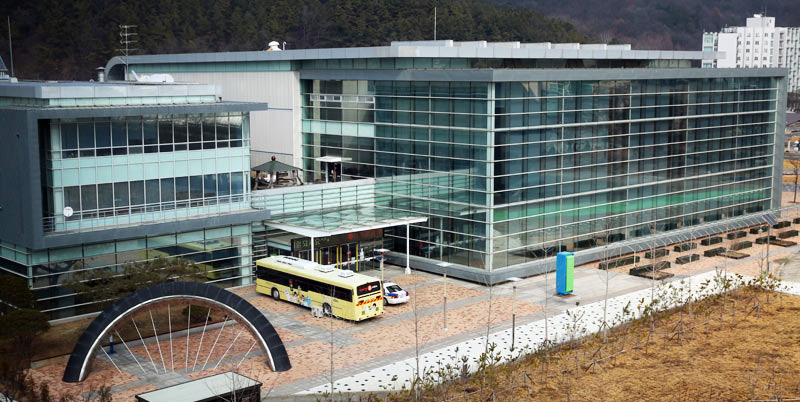Quite possibly the greatest improvement to traffic safety in Korea has been the 95% reduction of fatal traffic crashes involving children. A large variety of programs is behind this change, including the mandatory annual attendance to traffic culture institutes by all pre-school to high school students as part of their annual traffic safety curriculum, along with significant changes to streets near schools, and invaluable assistance from various NGOs.
Called Traffic Culture Institutes (교통문화연수원, 交通文化硏修院, gyotong munhwa yeonsuwon, these are located in cities around the nation. Staff teach groups a wide variety of information about traffic safety, from how to use crosswalks, to crash simulators, to CPR training, how to ride the subway, and how to report a traffic crash. In warmer months their outdoor section is open for guided tours and simulations of streets and intersection.

If you wish to visit one of these safety institutes, contact they ahead of time for pertinent information, including if there is any English and if there is an entrance fee. For example, the sole location in Daejeon has a free mini car museum with a few interactive displays for kids. Vehicles on display include some bikes, cars, an early electric vehicle, a race car, and a hwacha replica, which was a military weapon that could fire several hundred arrows via rocket power. Near the museum entrance are several police motorcycles people can sit on and take pictures. Their second and third floor are teaching spaces and are reserved for student on weekdays but are open to the public on weekends with a reservation. These higher floors have an entrance fee of 2,000 won for children and teens and 3,000 won for adults.

A number of adults visit these facilities as well during weekdays but for a very different curriculum. Driving infractions result in a reduction of points on a driver’s license. If enough points are removed from a driver’s license, then the individual must go to classes held at these transport safety institutes in order to restore their license.
To read more about these institutes and other measures used to increase traffic safety for children, please see the book KOTI Knowledge Sharing Report 15 - Korea’s 95% Reduction in Child Traffic Fatalities: Policies and Achievements from the Korea Transport Institute. Another related book is KSP 4 Lessons from Transport Safety Policy in Korea.